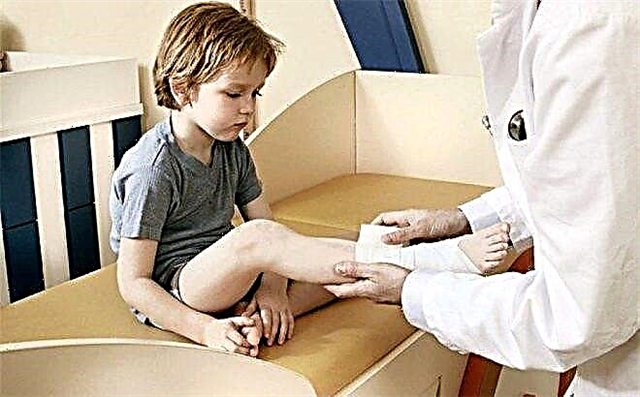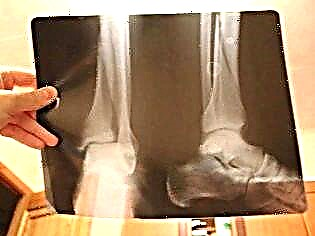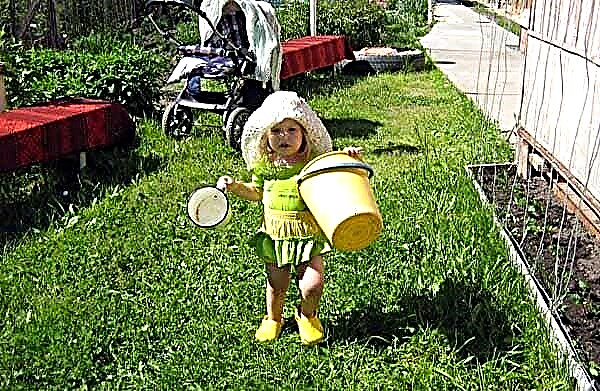
The first steps of a baby are a joyful event. But along with them, a period of doubts and anxieties begins in the life of parents, since it is with the first steps that pathologies of the development of the feet that were previously impossible to notice are usually revealed. What to do if a child has a "wheel" leg, what is a varus deformity of the foot, we will tell in this article.

What it is
Varus deformity of the foot is a pathology of the lower extremities in which the axis and dome of the feet are distorted, when walking, the baby rests on the outer edge of the foot, respectively, the very "wheel" is formed between the knees.
The knees do not close if the legs are kept parallel. Pathology is also called O-shaped curvature.
Quite often, varus deformity is confused with clubfoot. In fact, these are two different pathologies. Clubfoot is congenital, and varus of the foot is always acquired.
For children under 3-4 months of age, legs with a "wheel" are a variant of the norm. But after this age, only an experienced orthopedic surgeon can assess the situation.

The child's joints are weak, plastic, muscle tissue is not sufficiently developed, and therefore improper loads on the legs can cause this type of foot anomaly. Incorrect installation increases the load on all types of joints and tendons, especially the knee joint, hip and ankle joint.
If the pathology is not considered in time and treatment is not started, then the child may become disabled. Overloaded joints wear out faster, improper and insufficient depreciation lead to deformations, hernias, cysts of the spine, intervertebral space.
Mild forms of the disease lend themselves best to correction; you can actually correct the setting as long as the child's bones are actively growing. The critical age is the age of 8 years.
If until this time the varus curvature could not be corrected, it's time to think about surgical intervention, because after 8 years the pathology will only progress.

Causes
A great variety of reasons can lead to curvature of the axes and the inability to close the knees.
The disease most often occurs in children belonging to the so-called risk group - it includes:
- premature;
- small children;
- babies with cerebral palsy;
- children who suffered rickets in the first year of life;
- children with injuries to the ankle, knees, hip joint.

A considerable share of the responsibility lies with the parents. Babies, who are brought to an upright position early, are put on their feet until they reach the age of 9-10 months, placed in a variety of verticalizers (walkers and jumpers), especially if they are well-fed and weigh more than the age norm, are more susceptible to such an O-shaped deformities of the legs.
The reason for the development of a varus foot can also be uncomfortable shoes, which poorly fix the legs of the baby, who has already begun to stomp on his own two feet, as well as inappropriate nutrition, in which the child has a deficiency of calcium and important vitamins.

Symptoms and Signs
At the initial stage, it is rather difficult to consider varus deformity. The child is not worried about anything. But as it grows, clinical signs of pathology begin to appear, which, by the way, develops at a rather slow pace.
The child may experience pain when walking, in the evenings he may have swelling of the legs, he is not very good at running, and too active and mobile games quickly tire him.

In some types of varus deformity, systematic calf cramps can be observed.
Since the baby rests on the outer part of the foot, then he will wear out unevenly any pair of shoes, with varus deformation, the outer part of the sole will wear out much faster than the inner one.
With the progression of the disease, the child develops a specific "duck" gait, he is very awkward, waddles when he walks, when he tries to run he throws his arms out to the sides and tries to balance.

Diagnostics
The orthopedic surgeon, if a varus deformity is suspected, prescribes radiography of feet and legs in three projections. If the stage is already advanced enough, then an X-ray examination of the features of the hip and knee joints may be required.


In cases with varus deformity, doctors always try to establish the true cause of the development of pathology, and therefore the child can be prescribed impressive list of analyzes, including blood tests for calcium and phosphorus content, consultations of a neurologist, pediatrician and traumatologist.

Treatment
Doctors try to treat children with varus deformity using conservative methods. With mild degrees of curvature, this is quite enough to completely eliminate the anomaly and restore the normal setting of the legs.
Surgical intervention is recommended only for children who have not been helped by conservative treatment and preschoolers with severe curvature.
When starting treatment, parents should understand and be fully aware that therapy can take not only months, but years. Pathology is eliminated even more slowly than it develops.
Treatment will require a systematic approach from adults, strict adherence to all medical recommendations, a serious attitude to home procedures, many of which will become daily and mandatory.

The child may be assigned wearing orthopedic shoes. It is made according to special individual measurements; an order can be made in an orthopedic salon. These are not ordinary sandals and boots. These pairs of shoe pairs have serious instep supports, orthopedic insoles, heavy and massive soles, rigid backs and sides for secure fixation of the foot and ankle in the anatomically correct position.
There is no universal shoe for treating varus deformity. For each child, taking into account his stage, the degree of deviation of the position of the feet from the norm, wearing a certain pair of shoes is shown. That is why you should not choose such shoes at your own discretion. You should follow the recommendations of the orthopedist.


The entire course of treatment will be accompanied by therapeutic massage sessions. Two weeks of massage usually alternate with three weeks of rest, after which the massage effect is repeated. Massage is not difficult, and therefore absolutely every mother or grandmother can master its technique and techniques.
The massage includes classic techniques with rubbing, kneading and vibration. First, the feet are massaged, then the ankle. When correcting varus deformity, it is important to pay attention to the heel and arch of the foot, as well as the lower leg. They are kneaded quite intensively, taking them to this massage zone for up to half of the entire session.
Be sure to massage the thighs, lumbar region and lower back. The movements of the masseur should be intense, but not painful at the same time.
Parents should teach their child to do special exercises. Exercises aimed at improving the condition of muscle tissue, connective tissue and tendons can be shown by an exercise therapy instructor from any children's clinic. The orthopedist will definitely refer to him, prescribing treatment.
It depends on the parents not only whether the child will do the exercises properly, but also how effective such gymnastics will be. If the baby is interested in this process, if mom and dad managed to arrange the treatment as a game, and not as a forced measure, then the effect comes much faster.
As with flat feet and hallux valgus, with varus it is quite possible to use at home massage mats - foot applicators. The stiffer the material and the more embossed the coating pattern, the better in terms of benefits.
Quite often, the child will have to visit the physiotherapy room. Magnetic therapy, electrophoresis, as well as paraffin therapy and mud applications, together with stimulation of the muscles of the legs with electrical impulses, have a very good effect on the final result.

There is no magic pill for varus deformity, and therefore no drug treatment is prescribed.
Children with severe pain syndrome, which usually accompanies rather severe forms of foot deformities, can be treated with symptomatic treatment - pain relievers, which the doctor will advise.
Operations to eliminate the varus of the foot can be performed using various techniques. Quite often, children undergo surgical correction of the meniscus, ankle joint, and sometimes the knee joint. The recovery period is quite long, the child can spend several months in the Elizarov apparatus.

After the operation, when the child stands on his feet, he is shown the whole complex of conservative treatment, which was described above, including massage, gymnastics, exercise therapy and physiotherapy.
You can learn how to avoid varus deformity of the foot in a child in the next video.



